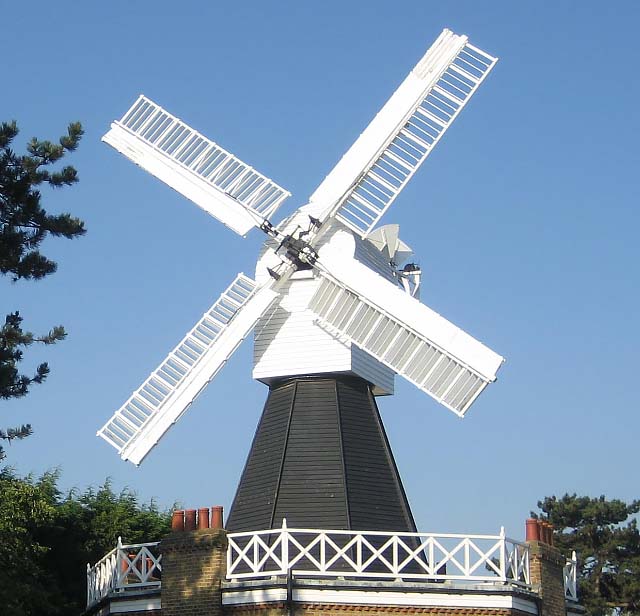Wimbledon Windmill Museum
A visit to Wimbledon Windmill Museum followed by a bracing walk on the Commons and refreshment at the Windmill Tearooms makes an excellent day out for both family and adults. The Commons are only a short distance from central London and can be reached by public transport.
Since 1817 the windmill has been a distinctive landmark in the middle of Wimbledon Common. It operated until 1864, when the 5th Earl Spencer evicted the miller as part of his plan to enclose the common. The people of Wimbledon objected, and after a long campaign succeeded in passing the Act of 1871 which gave everyone the right in perpetuity to enjoy use of the Commons. Today the Commons are a magnificent green space of 460 hectares, over which the public are free to roam.
After the windmill ceased operating it became residential accommodation, and then in 1975 it became a museum. Throughout this time the sails remained in place, and today they are restored to working order.
The museum tells the story of the development of the English windmill, told through models, video and examples of windmill machinery. The story has been brought up to date by a display of a modern wind turbine. There are also exhibits on rural life and local history, and children can have a go at grinding corn themselves, using a hand quern. Although the original milling machinery is no longer in place, it is possible to enter the tower see how the fantail mechanism keeps the sails facing into the wind.
One room from the time that the windmill was used to accommodate six families has been retained, to illustrate life in Victorian times. There are also displays of Scouting memorabilia and a magnificent collection of hand tools which belonged to a millwright and ship’s carpenter.
As the museum is run entirely by volunteers, entry prices are kept very low. There is also a small shop selling souvenirs, maps, books on windmills and local history as well as Wombles (who of course live on Wimbledon Common).

